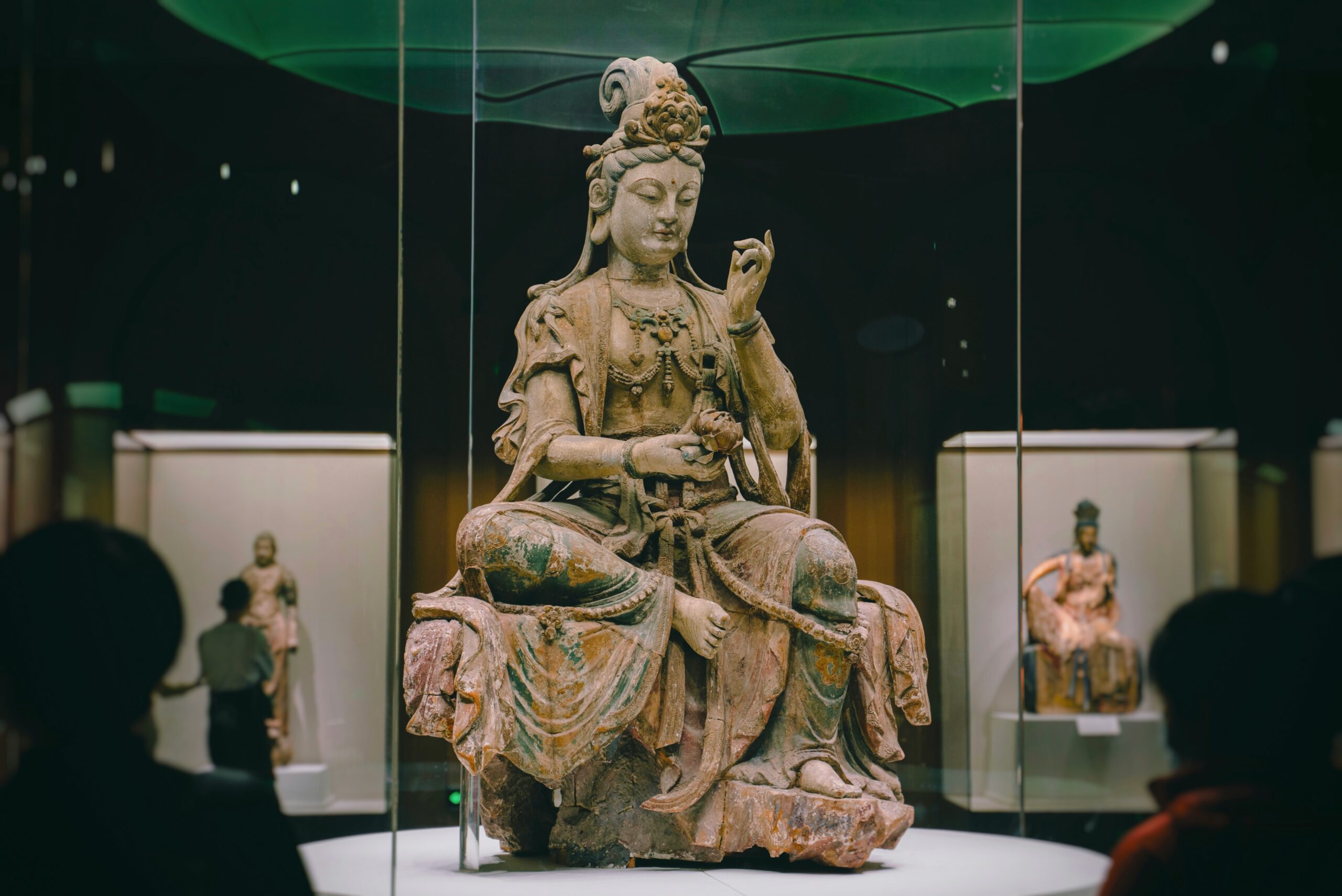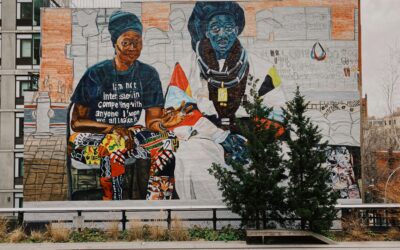South Asia, particularly India and Nepal, holds one of the world’s most enduring sculptural traditions. From temple carvings that span thousands of years to refined bronze icons of Hindu deities, sculpture in this region is inseparable from spirituality, mythology, and ritual. These works are not simply decorative—they are embodiments of divine energy, vehicles for meditation, and expressions of cosmological truths.
In this article, we explore the symbolic depth of South Asian sculpture, focusing on the cultural and religious meaning behind the forms, gestures, and materials used across centuries.
Sculpting the Divine
At the heart of South Asian sculpture is the belief that art is a sacred act. In Hinduism, Jainism, and Buddhism—three religions born in this region—sculpture plays an essential role in bringing the divine into the tangible world.
Deities are not imagined as abstract or distant; they are vividly rendered in human or semi-divine form. Temples across India feature thousands of carved figures—gods, goddesses, celestial beings, animals, and mythic creatures—all arranged in cosmic harmony. Each figure is meticulously designed to express theological concepts and spiritual ideals.
One of the most iconic examples is the Nataraja, a bronze sculpture of the Hindu god Shiva in his cosmic dance. Every element of the Nataraja’s form is symbolic:
The circle of fire represents the endless cycle of birth and rebirth.
His upper right hand holds a drum, symbolizing creation.
His upper left hand carries fire, representing destruction.
One foot crushes the demon of ignorance, while the other is raised in liberation.
His hair radiates in motion, embodying cosmic energy.
These layered symbols are intended not only to be viewed but contemplated, serving as a gateway to understanding the universe and the self.
Iconography and Gesture (Mudra)
South Asian sculpture places strong emphasis on mudras, or symbolic hand gestures. Each mudra carries specific meanings:
Abhaya mudra: the raised hand with palm outward, signaling protection and fearlessness.
Varada mudra: a downward-facing open palm, representing compassion and granting of wishes.
Dharmachakra mudra: used in Buddhist imagery, symbolizing the turning of the wheel of Dharma (teaching).
These gestures are universal across temples and shrines, making them powerful tools of visual communication that transcend language and time.
Facial expressions, bodily proportions, and postures are also carefully codified, often following rules laid out in ancient Sanskrit texts like the Shilpa Shastras.
Temple Sculpture as Cosmic Diagram
Hindu and Buddhist temples in South Asia are more than places of worship—they are designed as symbolic representations of the universe. The sculptures that cover their walls and towers are not random; they are arranged according to cosmological principles.
In Hindu temples, for example, gods are often placed on the central sanctum (garbhagriha)—the spiritual womb of the temple. The outer walls feature devatas (divine beings), apsaras (celestial dancers), and mythical animals that represent natural and divine forces in harmony.
Similarly, in Buddhist stupas and monasteries, sculpted reliefs narrate the life of the Buddha and his past incarnations (Jataka tales), reinforcing the path of enlightenment. The carvings also function as mnemonic devices for meditation and moral teaching.
The temple as a whole becomes a sacred mandala—a physical and spiritual map guiding the devotee inward, toward union with the divine.
Material and Meaning
The choice of material in South Asian sculpture is also symbolic. Stone, particularly sandstone and granite, signifies permanence and strength. Bronze, used extensively in Chola-period South Indian art, is associated with refinement and divine radiance.
The lost-wax casting method used to create bronze sculptures is itself a ritual. The sculptor (often from hereditary artisan families) performs prayers before and after each phase, considering the process a sacred act.
Jewelry, clothing, and adornments carved or cast into the sculptures aren’t mere ornamentation—they indicate the deity’s qualities, domains, and cosmic functions. For example, Vishnu’s conch and chakra symbolize sound and cosmic order, while Durga’s weapons embody her role as protector and destroyer of evil.
Tantra and Esoteric Symbolism
In certain South Asian traditions, particularly Tantra, sculpture takes on deeply esoteric meanings. Images of divine couples (such as Shiva and Shakti in union) are not meant to be erotic in a mundane sense but represent the merging of masculine and feminine energies—consciousness and power.
These tantric sculptures, often misunderstood, symbolize the dynamic and creative forces that sustain the universe. They are intended to awaken the practitioner’s awareness of internal spiritual energies.
Mandalas, yantras, and symbolic diagrams sometimes appear in sculptural form, guiding initiates in meditative and ritual practices that aim to transcend the material world.
Sculpture in the Himalayas: Nepal and Tibet
In the Himalayas, particularly in Nepal, sculpture takes on intricate and refined characteristics. Newar artisans have crafted exceptional bronze and gilt figures of deities for centuries. In Tibetan Buddhism, Bodhisattvas, wrathful protectors, and tulkus (spiritual leaders) are depicted with vivid expression and ritual significance.
Tibetan Buddhist sculptures often incorporate rare materials—such as coral, turquoise, and gold—and follow strict iconographic rules. These sacred images are used in rituals and visualization practices that aim to generate compassion, wisdom, and insight.
Modern South Asian Sculpture
In the 20th and 21st centuries, South Asian artists began blending traditional sculptural symbolism with modern themes. Some preserve classical techniques and forms, while others challenge them—using sculpture to comment on social, political, or ecological issues.
For instance, contemporary Indian sculptors such as Anish Kapoor explore abstract and minimalist forms inspired by both Western art and South Asian spirituality. His reflective, void-like sculptures evoke the meditative and formless aspects of Buddhist and Hindu philosophy.
In public spaces, sculptures of freedom fighters, saints, and folk heroes now stand alongside mythic deities—reflecting a broader and evolving sense of identity.
Conclusion
South Asian sculpture is not just an art form—it is a spiritual practice, a philosophical system, and a living tradition. Each curve, gesture, and icon holds layers of meaning that connect the material to the metaphysical, the visible to the invisible.
From the sacred dance of Shiva to the serene face of a meditating Buddha, these forms have guided devotees for centuries, inviting contemplation, devotion, and inner transformation. In today’s world, their timeless symbolism continues to inspire not just worshippers, but artists, thinkers, and seekers across cultures.




